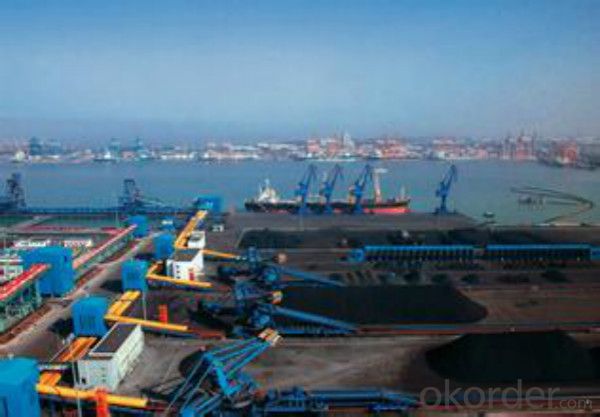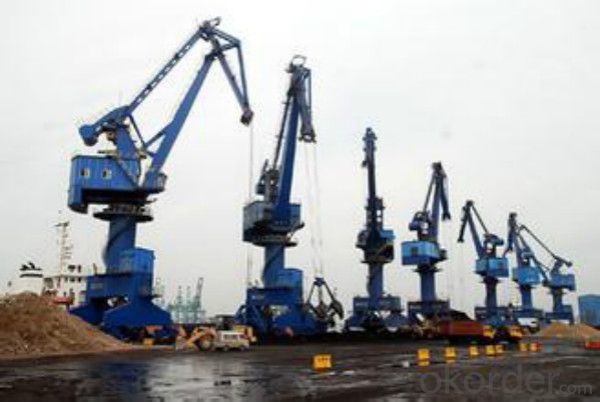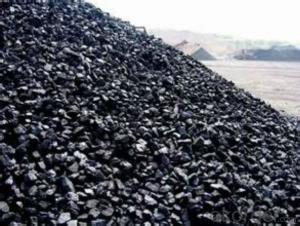60-90mm Foundry Coke for Furnace Charge
- Loading Port:
- Tianjin
- Payment Terms:
- TT OR LC
- Min Order Qty:
- 1000 m.t
- Supply Capability:
- 20000 m.t/month
OKorder Service Pledge
OKorder Financial Service
You Might Also Like
Product Description
Foundry Coke is one of metallurgical raw materials used for steel making.The coke handled by our couporation is made from superior coking coal of Shanxi province. Provided with the dvantages of low ash, low sulphur and high carbon.Our coke is well sold in European,American,Japanese and South-east Asian markets.
Features
This is a special coke that is used for furnaces to produce cast and ductile iron products. It is a source of heat and also helps to maintain the required carbon content of the metal product. Foundry coke production requires lower temperatures and longer times than blast furnace coke.
Specification
Fixed Carbon | Sulphur Content | Moisture | V.Matter | Ash |
86%min | 0.7%max | 5%max | 1.2%max | 12%max |
88%min | 0.65%max | 5%max | 1.5%max | 10%max |
85%min | 0.8%max | 15%max | 2%max | 13.5%max |
Pictures


FAQ:
1 Time for after-sales?
1 year.
2 Payment terms?
D/P, L/C, T/T with downpayment
- Q:How to match?Want to breed a batch of roses seedlings, but the seedbed of mud, carbon soil do not know how to get, there is help in this regard...
- Clay soil can not be prepared, it was completed by geological changes over the past ten thousand years. Flower cultivation of soil can be self-made, mud carbon 3 points, coconut bran 2 points, perlite a point. The three proportion is 3; 2; 1.
- Q:What is carbon steel, carbon manganese steel?
- Carbon manganese steel is a high-quality carbon structural steel in the higher manganese content of carbon steel, manganese elements are generally marked in the rear, such as 20Mn, 40Mn and so on
- Q:What are carbon nanotubes?
- Carbon nanotubes are cylindrical structures made of carbon atoms arranged in a unique hexagonal lattice, resembling rolled-up sheets of graphene. These nanomaterials possess exceptional strength, high electrical and thermal conductivity, and various other unique properties that make them promising for a wide range of applications in fields such as electronics, materials science, and medicine.
- Q:What is carbon neutral?
- Carbon neutral refers to achieving a state where the amount of carbon dioxide emitted into the atmosphere is balanced with the amount that is removed or offset. It is a widely used term in the context of addressing climate change and reducing greenhouse gas emissions. To become carbon neutral, one must first assess their carbon footprint, which involves calculating the greenhouse gases produced through activities like energy consumption, transportation, and waste management. Once the emissions are identified, steps are taken to decrease them through various methods, such as improving energy efficiency, utilizing renewable energy sources, and adopting sustainable practices. Although it is challenging to completely eliminate carbon emissions, it is crucial to reduce them. In cases where complete elimination is not possible, carbon offsets can be employed to compensate for the remaining emissions. Carbon offsets involve investing in projects that reduce or remove greenhouse gases from the atmosphere, like reforestation, renewable energy initiatives, or methane capture projects. By achieving carbon neutrality, individuals, organizations, or activities can assert that they are not contributing to the increase of greenhouse gases in the atmosphere. This is a significant objective in the battle against climate change, as it helps mitigate the adverse effects of carbon emissions and promotes a more sustainable and environmentally friendly future.
- Q:What's the reason for grading? What about the use of composites? What's the difference?
- 1, carbon fiber has a benzene ring structure, making it difficult to rotate the molecular chain. A polymer molecule cannot fold and stretch to form a rodlike structure, thus giving fibers a high modulus.The linear structure of carbon fiber polymers allows molecules to be arranged so closely that a large number of polymer molecules can be accommodated in a unit volume. This high density makes the fibers stronger.
- Q:What is the difference in carbon content of low carbon steel, medium carbon steel and high carbon steel?
- The carbon content of medium carbon steel (AISI1029 to 1053) is 0.25% to 0.55%, manganese content is 0.30% to 1%, phosphorus content is not more than 0.04%, sulfur content is not more than 0.05%.
- Q:What is carbon dioxide?
- Carbon dioxide (CO2) is a colorless and odorless gas composed of one carbon atom bonded to two oxygen atoms. It is naturally present in the Earth's atmosphere and is also produced by human activities such as burning fossil fuels and deforestation. Carbon dioxide plays a crucial role in the Earth's carbon cycle and is a greenhouse gas, contributing to global warming and climate change.
- Q:What are the impacts of carbon emissions on the stability of mangroves?
- Carbon emissions have detrimental effects on the stability of mangroves, which are crucial coastal ecosystems. The increased levels of carbon dioxide (CO2) in the atmosphere contribute to global warming, leading to rising sea levels and increased frequency and intensity of storms. These changes directly impact the stability of mangroves in several ways. Firstly, rising sea levels caused by global warming can result in increased inundation of mangroves. As the sea level rises, saltwater intrusion occurs more frequently, affecting the delicate balance of saltwater and freshwater in mangrove ecosystems. This can lead to the displacement and decline of mangroves, as they struggle to adapt to the changing conditions. Secondly, the increased frequency and intensity of storms associated with climate change can cause physical damage to mangroves. Mangroves act as a natural barrier, protecting coastlines from storm surges by absorbing wave energy. However, with stronger storms, the resilience of mangroves is tested, and they may be uprooted or destroyed, leaving the coastlines vulnerable to erosion and further damage. Furthermore, carbon emissions are also linked to ocean acidification, which occurs as the excess CO2 in the atmosphere is absorbed by the oceans. Acidic waters can negatively impact the growth and development of mangroves, as they are sensitive to changes in pH levels. This can lead to reduced productivity, stunted growth, and even death of mangroves, further destabilizing these ecosystems. The stability of mangroves is vital for both the environment and human populations. Mangroves provide essential habitat for various species, serving as a nursery for fish and supporting biodiversity. They also act as carbon sinks, sequestering significant amounts of CO2 from the atmosphere. Additionally, mangroves play a crucial role in coastal protection, mitigating the impacts of erosion, storm surges, and flooding. To mitigate the impacts of carbon emissions on the stability of mangroves, it is crucial to reduce greenhouse gas emissions and limit global warming. This can be achieved through the adoption of clean energy sources, conservation efforts, and reforestation initiatives. Protecting and restoring mangrove habitats is equally important, as it helps maintain their stability and resilience to climate change impacts.
- Q:How do fossil fuels release carbon into the atmosphere?
- Fossil fuels release carbon into the atmosphere through the process of combustion. When fossil fuels like coal, oil, and natural gas are burned for energy production, carbon dioxide (CO2) is released as a byproduct. This CO2 is a greenhouse gas that traps heat in the Earth's atmosphere, contributing to global warming and climate change.
- Q:What are the differences between the three carburizing, nitriding and carbonitriding? What are the different effects on the material?
- Carburizing: carburized workpiece after quenching and low temperature tempering, so that the surface has a high hardness of river abrasion resistance, and the heart still maintain a good plastic River toughness, so as to meet the workpiece outside the hard, internal use of tough requirementsNitriding: after the nitriding of the parts, the surface forms a nitride.
1. Manufacturer Overview |
|
|---|---|
| Location | |
| Year Established | |
| Annual Output Value | |
| Main Markets | |
| Company Certifications | |
2. Manufacturer Certificates |
|
|---|---|
| a) Certification Name | |
| Range | |
| Reference | |
| Validity Period | |
3. Manufacturer Capability |
|
|---|---|
| a)Trade Capacity | |
| Nearest Port | |
| Export Percentage | |
| No.of Employees in Trade Department | |
| Language Spoken: | |
| b)Factory Information | |
| Factory Size: | |
| No. of Production Lines | |
| Contract Manufacturing | |
| Product Price Range | |
Send your message to us
60-90mm Foundry Coke for Furnace Charge
- Loading Port:
- Tianjin
- Payment Terms:
- TT OR LC
- Min Order Qty:
- 1000 m.t
- Supply Capability:
- 20000 m.t/month
OKorder Service Pledge
OKorder Financial Service
Similar products
New products
Hot products
Related keywords





























